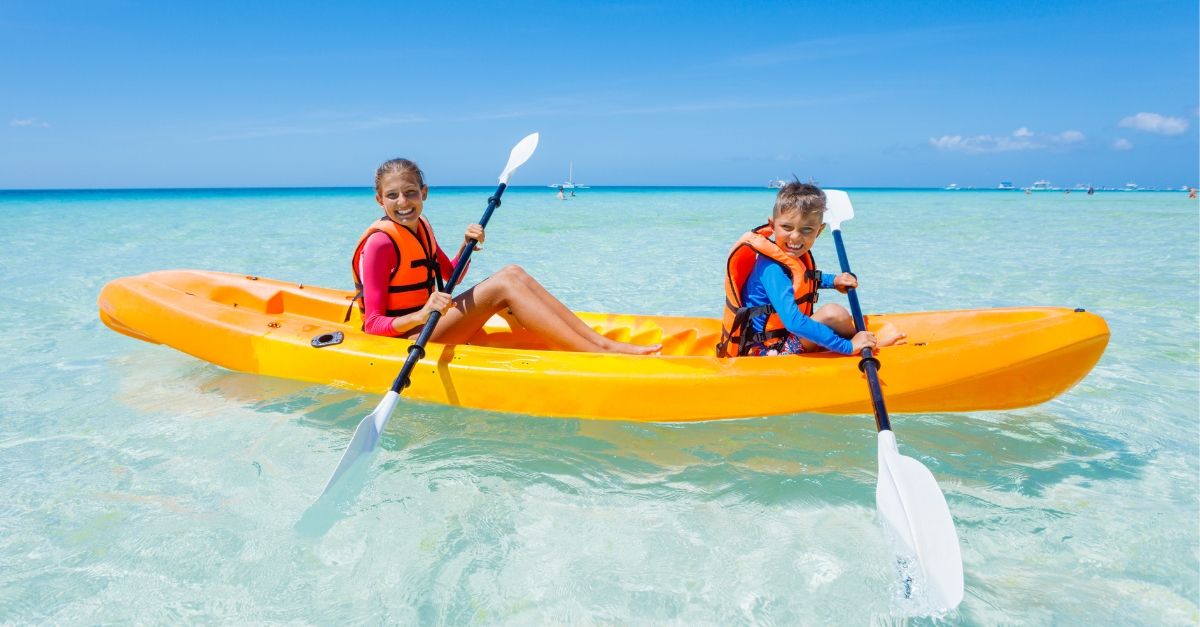An inflatable kayak easily comes to mind when you need a nice cruise or necessity of work.
It is lightweight, compact, easy to inflate and accessible to remote areas. The most amazing part is that you can travel with it-by road or by plane. Isn’t that appealing? Let’s give you more reasons why an inflatable kayak is a good choice.
What to Consider when Choosing an Inflatable Kayak
Main Types of Inflatable Kayak
There are an array of inflatable kayaks to choose from, depending on whichever suits you and your company, if any.
Pack Rafts
These include inflatable kayaks weighing less than 10lbs/4.5Kg, popular for accessing remote areas, and are of great portability.
Fish-tailing
This style of inflatable kayak obtains its name from the motion of the kayak’s nose, prompted by the direction in which the last paddle goes, and also depending on how short or lightweight the kayak is. If you like fishing sport, that’s your kayak!
Open Style Kayak Design
This is quite different from other styles of kayaks with a combination of the traditional double-sided kayak paddle and walls that are higher than the sit-on-top kayak, however, lower than the canoe style kayak.

High-Pressure Kayaks
These feature kayaks that have the capacity of 6 PSI, with the drop-stitch construction which makes use of tons of tiny threads to link both top and bottom segments, and make a stronger connection to withstand higher pressures. However, these styles of kayaks are expensive.
Low-Pressure Kayaks
These include kayaks with PVC floor bladders and i-beams. This is not as expensive as the high-pressure kayaks, and usually has a maximum capacity of 2 PSI. This kayak is great to carry when hiking since it is lighter.
Other styles of inflatable kayaks include canoe style kayaks, sit-inside kayaks, sit-on-top kayaks, self-bailing kayaks, tracking-fin kayaks.
How to choose an inflatable Kayak: features to Take Into Consideration
Have you only been concerned with the model or sophistication of inflatable kayaks or you’ve planned a day out on the river with your best friend who plans to bring his dog along?
The objective you have in mind is a crucial factor when choosing an inflatable kayak.
Going Solo Or In Tandem
if you intend paddling alone, then the single kayak is right for you. If you want company, then kayaks with multiple seats or open cockpits are a great choice.
Lightweight or Heavyweight Paddlers
Choose a kayak that is strong enough to accommodate your weight as a paddler.
Does your kayak make room for your rather long legs too? Is it wide enough for your size and gear?
Air Chambers
An indispensable feature of an inflatable kayak is its air chamber, which is usually multiple.
Why is this the case? Multiple air chambers serve as a backup to other air chambers, and you are assured of safety against a sudden ‘pop’ or deflation.
The more chambers it had, the damages from a hole in the material is less meaningful. At the same time it usually takes a little more time to pump with air.
Footrests
These are also a inflatable parts of the inflatable kayak, which helps to cushion your feet, much like a seat does. So if you are particular about being comfortable, then footrests should be on your checklist.
Drain holes
Self-bailing drain holes are a usual feature of inflatable kayaks, as they are much useful when the tides are up, and keep the kayak lightweight.
Valves
These are vital parts for inflating and deflating a kayak. They are very important for portability and use. In search of the best valves, go for the Boston valves. They have a one-way valve which keeps the air in and a top cap that covers the filling hole.
Material
speaking of material, inflatable kayaks have been known to be made of PVC and Hypalon, until the more recent use of Nitrylon. This is because of their extremely rugged strength and durability. But how can you tell the difference?
PVC: PROS AND CONS
- They are usually brightly colored.
- They optimize features such as durability and compactness
- They are less costly, easy to patch or weld.
However,
- UV rays can damage PVC
- They are prone to be affected by chemicals and extreme temperatures.
HYPALON: PROS AND CONS
- They are more resistant to UV rays and fungus
- They are more durable than other materials
- They are oil resistant
- They have a great air-holding capacity.
However,
- They cannot be welded
- They cost more
NITRYLON: PROS AND CONS
- They are stronger than PVC
- They are more resistant to cold and abrasion
However,
- They are heavier.
Final Words…
We do hope this article answers your questions and aids your choice of inflatable kayaks for your next paddle on the watercourse.
Are there other factors you must consider? Yes! These may include the weather or water condition, the amount of gear you are carrying, etc.
Your opinion is important to us!
Do you have more suggestions on how to choose an inflatable kayak? Let us know in the comments bellow or contact us!
